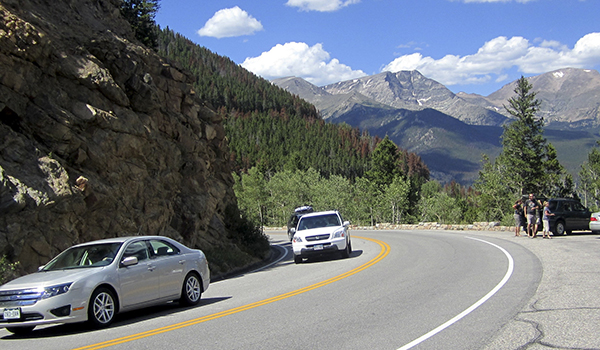The Wild Highway: Unintended consequences of traffic management in National Parks

National Parks are swamped ... and not the marshy kind. Managing millions of visitors can be tough, but managing those folks' campers, trucks, SUVs and electric-hybrid minis adds an extra challenge. The need to accommodate an armada of vehicles in a 'natural' space can strain park infrastructure to the breaking point. A strategy that managers are increasingly implementing is to cap vehicle access to highly popular sites during high-use times. At the Bear Lake Corridor in Rocky Mountain National Park, managers are trying out this approach alongside other management methods already in place, such as a robust shuttle system.
Because of limited parking infrastructure and capacities to provide a safe and quality visitor experience, managers at Rocky Mountain National Park choose to redirect vehicles away from the high mountain road at certain high capacity thresholds. In recently published research, IORT scientists examine the effect of this management intervention on visitor behavior. Some visitors were voluntarily tracked with GPS throughout their visit to the Park. If they were diverted from the high-use area, researchers examined their 'Plan B.'
They found that, after a first rejection, more than one-fifth of the diverted vehicles returned to the Bear Lake Corridor anyway. Other destinations also received higher numbers of visitors, perhaps creating greater impacts on these less-used areas. Diverted visitor vehicles made more stops, drove further distances and for a longer period of time than non-diverted visitor vehicles, but there was no significant difference in the length of time spent at points of interest within the park. Almost a tenth of initially diverted visitors left the main interior of the park, suggesting there was no good alternate experience once they'd been turned away from their intended destination.
While the vehicle diversion was effective at temporarily reducing congestion in the high-use area, its effect on visitors’ spatial behavior suggests a potential increase in impacts to park resources and the quality of the visitor experience as a result. IORT scientists suggest that reservation systems, like the ones in place in National Parks during COVID, might be an effective tool for managers to control visitation and mitigate resource and visitor experience impacts.
Read the full paper here.

